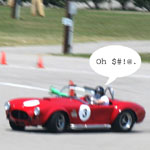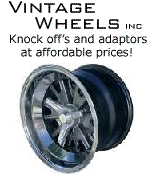
08-03-2001, 06:39 AM
|
 |
(An All-Around Nice Guy)

|
|
|
Join Date: Aug 2000
Location: Camden,
SC
Cobra Make, Engine: Unique Motorcars (sold)
Posts: 1,582
|
|

 Not Ranked
Not Ranked
 Dumb Question: Vapor Lock? Percolation?
Dumb Question: Vapor Lock? Percolation?
Nearly embarassed to ask, but...
I've been following the other thread about the owner of a '34 roadster with a 392 Hemi (geeeez...) who has the carburator problems. So I just gotta clear up a question that I've had for years:
What in the heck is vapor lock, anyway? What causes it?
And what's all this talk about percolating? Isn't that what coffee does?
Keith
__________________
Keith 
Former Unique owner.
Last edited by excelguru; 08-03-2001 at 08:02 AM..
|




















 Threaded Mode
Threaded Mode

